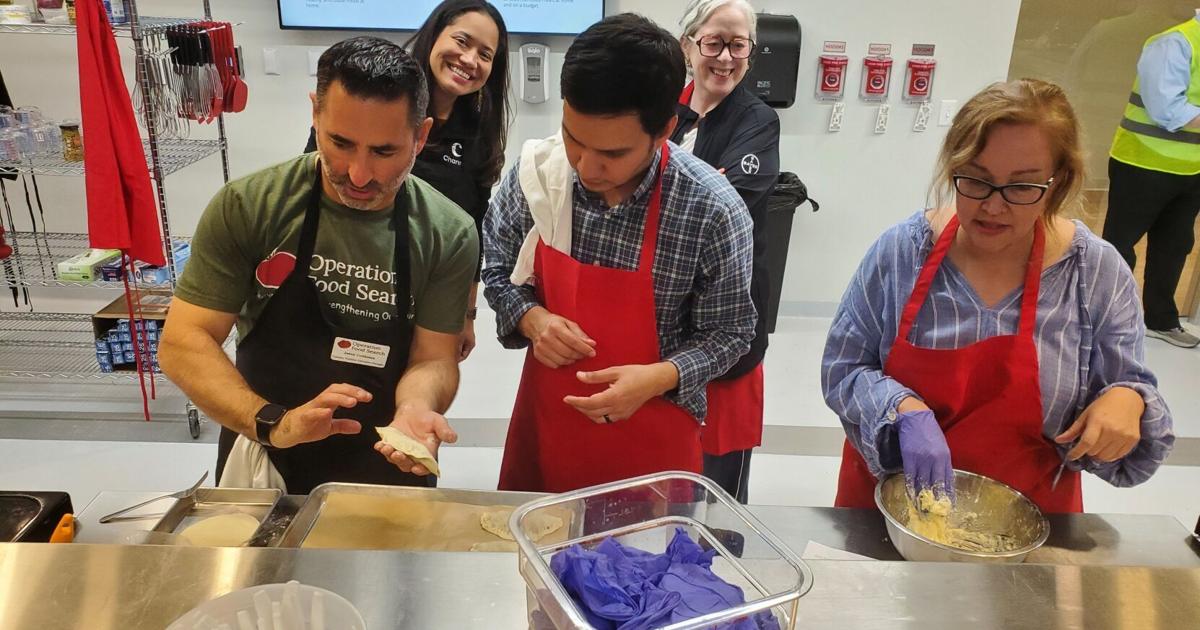In St. Louis, the challenges of cooking with certain pantry staples, like chickpeas, are being addressed by Operation Food Search through its innovative teaching kitchen. Despite being packed with flavor and healthy fiber, chickpeas are often underutilized, especially by those who rely on food pantries.
To help bridge this gap, chef Jason Goldman leads cooking classes where he demonstrates how to create delicious meals using simple, accessible ingredients. Recently, during one session, a participant, who initially expressed her dislike for curry, coconut milk, and chickpeas, ended up loving the Thai coconut curry dish they cooked together.
These classes are made possible by the generous contribution of the Berges Family Foundation, which fully funded the construction of the teaching kitchen at a cost of $500,000. Goldman, the culinary nutrition education manager at Operation Food Search, emphasizes the goal of the program: “We’re teaching people to cook for themselves at home.”
Unlike many teaching kitchens that boast professional-grade equipment and specialty ingredients, Operation Food Search focuses on the everyday cooking experience. The spacious kitchen includes eight cooking stations, each accommodating two participants, equipped with standard GE electric flat-top stoves and home cooking utensils. Goldman even chose color-coded knives from Amazon to help prevent confusion among users.
The cooking equipment is designed for comfort and familiarity, aiming to make participants feel at ease as they learn to prepare meals. According to Melissa Weissler, the chief program officer, the aim is to create an accessible environment for all.
The classes cater to a wide variety of audiences. While some sessions are tailored for individuals who pick up food from local pantries, others are designed for corporate teams seeking team-building activities or nonprofit groups wanting to learn recipes to share with their clients. Even social gatherings, like girls’ nights out, can book a class.
For-profit organizations are charged $750 for a one-hour class accommodating up to 16 participants, a fee that also subsidizes free classes for those in need. Nonprofits pay a reduced rate of $375 to cover class costs.
Goldman thoughtfully selects recipes that resonate with home cooks. One recent feature was a Mexican street corn bowl, made from roasted corn, beans, feta, cilantro, peppers, and a flavorful sauce served over quinoa. Goldman prefers quinoa over rice, citing its rich nutty taste and high protein content. It’s also more forgiving in the cooking process; while overcooked quinoa still retains its appeal, overcooked rice often does not.
Goldman seeks to inspire “lightbulb moments” among participants, aiming for instances of culinary epiphany. He notes that leafy greens, like kale, often languish on food pantry shelves because many people are unsure how to use them. To combat this, he developed a vibrant kale pesto pasta recipe that begins with briefly blanching the kale to enhance its color and texture. After blending it with garlic, Parmesan, and walnuts, the result is a silky, flavorful pesto that surprises and delights participants.
Despite the appealing dishes showcased in each class, Weissler insists that the primary objective remains clear: “Cooking at home, in and of itself, is the most important thing we’re trying to teach here.” By empowering individuals with the knowledge and skills to prepare their meals, Operation Food Search fosters a greater sense of independence and nutritional awareness in the community.
For those interested in learning more about the classes, Operation Food Search encourages everyone to take this opportunity to improve their culinary skills, ultimately promoting healthier eating habits across St. Louis. The initiative not only provides practical cooking strategies but also helps to build confidence among participants as they learn to use ingredients that are often overlooked.






